The Iceberg Thermal IceSLEET G6 Stealth Review: Top-Tier Colossal Tower Cooler
by E. Fylladitakis on October 13, 2022 8:00 AM ESTTesting Results, Maximum Fan Speed
To begin with, we are having a look at the IceSLEET G6 Stealth with its stock 140 mm fan running at its maximum speed.
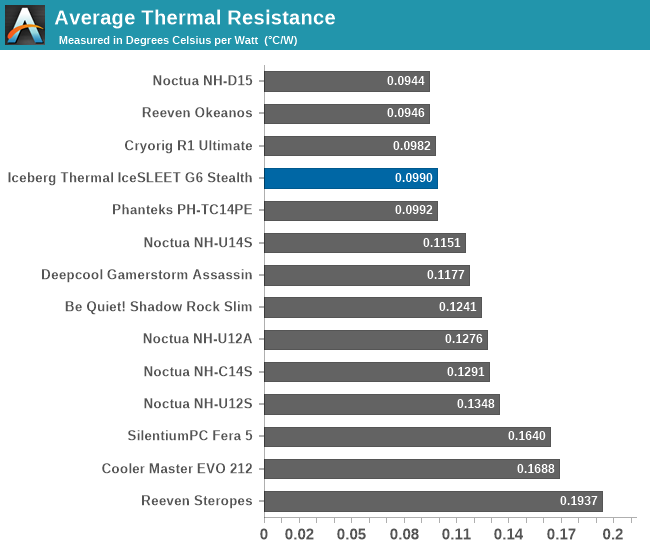
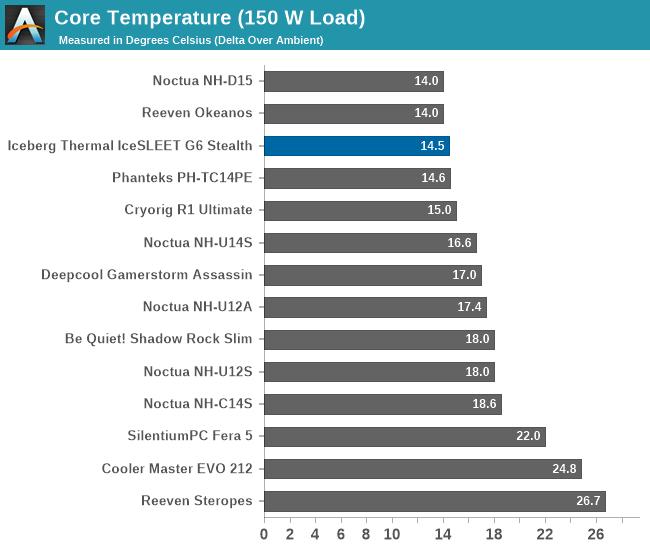
| Core Temperature, Constant Thermal Load (Max Fan Speed) |
Due to its enormous mass, we expected the IceSLEET G6 Stealth to land near other similarly-sized products, such as the Noctua NH-D15 and the Phanteks PH-TC14PE. We were not mistaken, as the average thermal resistance of 0.099 °C/W is extremely close to the figures we received from those other coolers.
The IceSLEET G6 Stealth seems to have trouble coping with very low loads, as the thermal resistance is unnaturally high in those scenarios, hinting that the energy transfer is rather slow. As the load increases and the temperature gap between the cooler and the cooling medium (air) widens, the thermal resistance drops considerably.
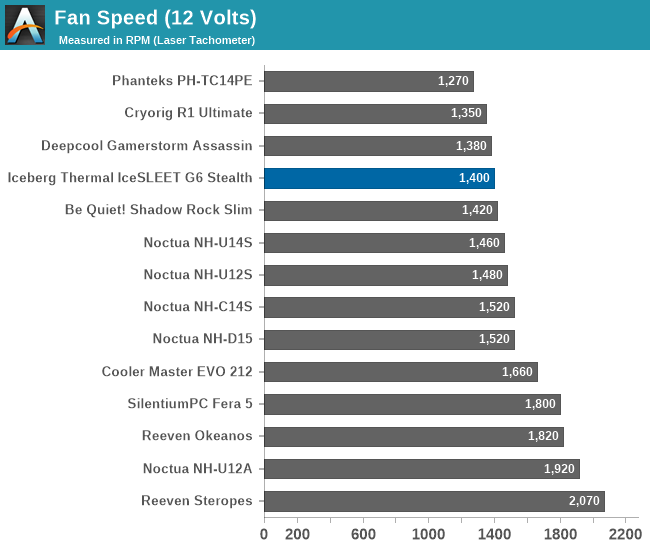
The IceSLEET G6 Stealth is, as its name also suggests, a product designed with acoustics in mind. Its 140 mm fan spins at exactly 1400 RPM and makes a rather good job of keeping noise levels relatively low. The cooler is clearly audible with the fan running at maximum speed but even then the noise pressure figures are tolerable for typical stress usage scenarios.

Testing Results, Low Fan Speed
Switching things up a bit, let's next take a look at cooler performance with the Iceberg Thermal 140 mm fan taken down to half speed.
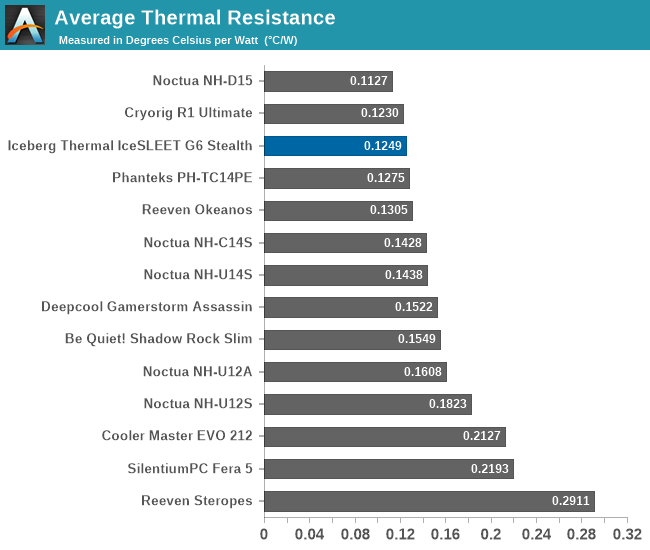
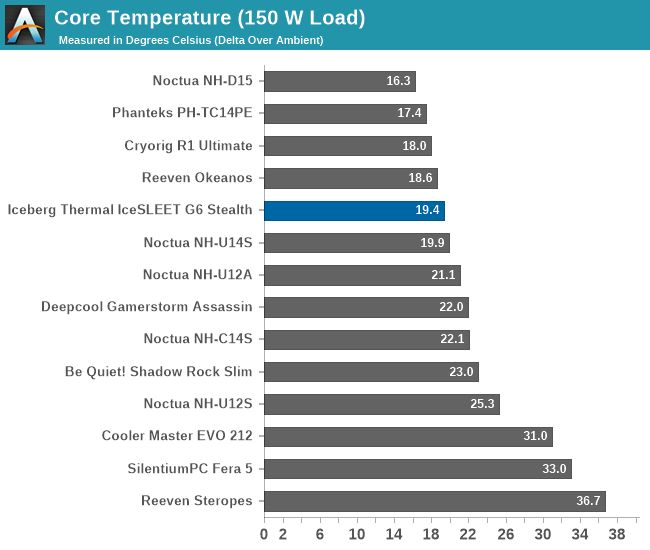
| Core Temperature, Constant Thermal Load (Low Fan Speed) |
After reducing the speed of the fan to about 700 RPM, the thermal performance of the IceSLEET G6 Stealth degraded only slightly, as expected from a cooler with so much mass and surface area. Once again, the thermal performance of the IceSLEET G6 Stealth is on par with that of other similarly sized coolers. It also follows the same pattern, with mediocre thermal resistance at very low loads and exceptional figures when the load is very high.
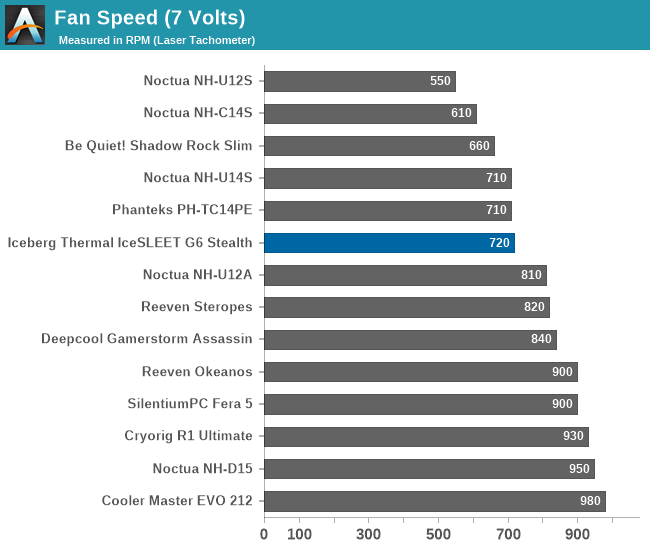
Dropping the speed of the Iceberg Thermal 140 mm fan down to 720 RPM makes the IceSLEET G6 Stealth cooler practically inaudible. With no direct line of sight, it is impossible to discern whether the fan is spinning or not even if very close to the cooler. It would take a very quiet room and very close proximity to hear the fan under such conditions.
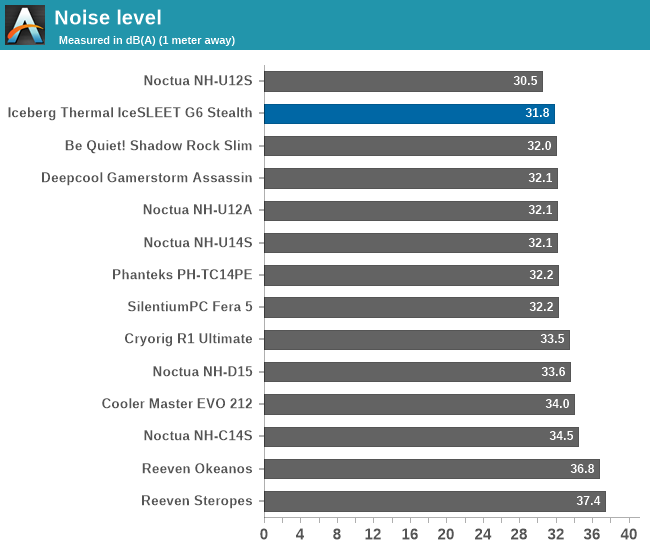
Thermal Resistance VS Sound Pressure Level
During our thermal resistance vs. sound pressure level test, we maintain a steady 100W thermal load and assess the overall performance of the coolers by taking multiple temperature and sound pressure level readings within the operating range of the stock cooling fans. The result is a graph that depicts the absolute thermal resistance of the cooler in comparison to the noise generated. For both the sound pressure level and absolute thermal resistance readings, lower figures are better.
This chart reveals where the IceSLEET G6 Stealth lands at compared to its major competitors. We can see that practically only the Noctua NH-D15 slightly outperforms the Iceberg Thermal cooler, with every other cooler matching the same thermal performance at higher sound pressure levels.


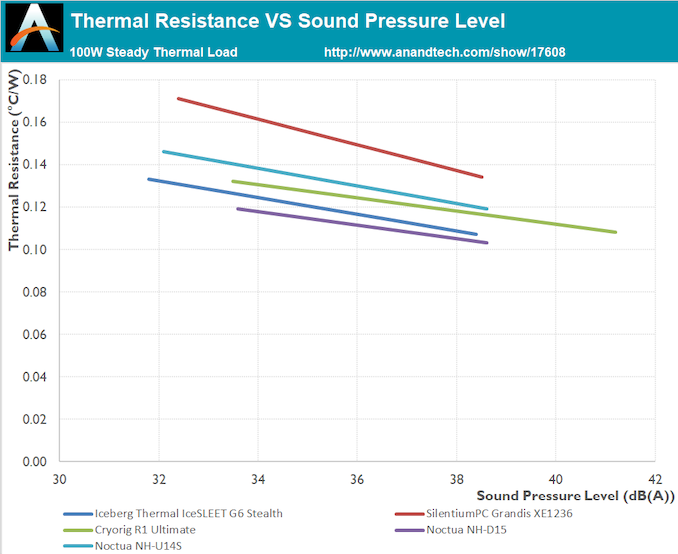








22 Comments
View All Comments
meacupla - Thursday, October 13, 2022 - link
That TPC 812 has the vapor chamber on the wrong side of the stack.It should go CPU | CPU heat spreader | vapor chamber | heatpipes. Kind of like how the RTX 4090 heatsink is designed.
Threska - Sunday, October 16, 2022 - link
Expensive, and more important no AM5 version.https://www.microcenter.com/product/635270/icegian...
WildBikerBill - Saturday, November 5, 2022 - link
Meanwhile, MicroCenter is still the seller and selling it with AM5 support here: https://www.amazon.com/IceGiant-ProSiphon-Desktop-...Foeketijn - Tuesday, November 8, 2022 - link
Then don't delid your CPU. The lid is 100% copper, so that'll take care of any unevenly spread out heat output.edzieba - Thursday, October 13, 2022 - link
Can you add a photo of it mounted on a motherboard to the article? Just the cooler on its own makes it almost impossible to judge scale (as cooler baseplates are not a standard size).Harry_Wild - Thursday, October 13, 2022 - link
Exactly what I want only it too high for my case which has 137mm limit on it! 160 mm is to high!
megadirk - Thursday, October 13, 2022 - link
Too bad it only comes with that color option, especially since it's called the "Stealth". At least it's easily removable to paint and not to difficult of an assembly to model and 3d print a replacement.thestryker - Thursday, October 13, 2022 - link
This seems like an interesting cooler, but like most of the high end air coolers there's so much weight. Would love to see something done bracing wise even if it's just some sort of attachment which can screw into the top of the case.Jonny314159 - Friday, October 14, 2022 - link
These results just tell me to keep buying the NH-D15.NeatOman - Friday, October 14, 2022 - link
I think there should be multiple loads they should be tested at. Heat pipes rely on a small amount of liquid in them evaporate (causing it to cool via phase change) and condense to then be wicked back, these evaporative temps can be change by modifying the liquid. This will in turn give you target temperatures that you have to balance with how well your cooling the heat pipes (fins and fans) and the thermal resistance from the heat pipes to the silicon die.Older chips with much larger die would be able to move much more heat into the IHS and it would benefit to set the gas off temperature higher inside the heat pipes. Now with chips so small it would be harder to move so much heat and a lower temperature would IMO help cool the CPU die better.
The next step is what I've seen on GPU's for a long time. Two stage phase change. First is a vapor chamber block sitting directly on the GPU die and then you have heat pipes on top to further move the heat away. It would be amazing to see the Thicc IHS on the Ryzen 7000 series chips be turned into a vapor chamber.
You can see how the new RTX 4090 can suck down just over 600 watts when overclocked yet with a volume of about equivalent to a max size tower CPU cooler it runs surprisingly cool.
DO IT AMD.. DO IT ! would be amazing if someone made IHS replacements that are said vapor chambers :-)